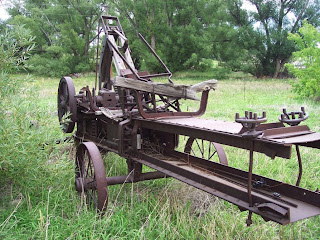
We’re not the nation’s authority on mining, but were not dead yet
By Rob Carrigan, robcarrigan1@gmail.com
I was reading an interesting edition of the Gold Rush published a few months before I was born, “the Vacation Edition,’ from Friday, June 30, 1961, Richard W. Johnson, editor.
Of particular note, a column titled “This is Victor.”
“The biggest payroll mines were near Victor and in the early days when they all got paid in gold, there would be a queue of miners three or four blocks long on paydays marching four abreast past the bank to receive their pay. And the golden eagles were piled so high on the paymaster’s tables that the tables had to be reinforced with steel to stand the weight.,” noted one story under the title “This is Victor.”
The city of Victor, according to the paper, was founded in 1893 by the Woods Brothers and named for Victor Adams who fathered the town of Lawrence, southwest of Victor on Wilson Creek in 1892. The Woods Brothers made their original fortune with the Gold Coin Mine in Victor, which they discovered while digging a basement for a hotel. With some of their fortune they built mansions in Colorado Springs on Wood Avenue and other Cripple Creek district miners followed suit to create a “Millionaires Row” that is still partially intact today.
“The only hard money seen in the District now is silver, and silver dollars are still popular with the natives to the delight of tourist,” notes the 1961 edition. “Gold coin went out in 1933, during the Roosevelt’s ‘bank holiday,’ a fact much bemoaned by the miners.”
Gold Rush Days recently, sponsored by the City of Victor, still features a parade, family events, and traditional mining games presented by the Cripple Creek & Victor Gold Mining Company that include loading a one-ton ore cart by hand, jack leg drilling, hand drilling and mucking. Also the historic home and building tours are conducted this weekend as well.
“Victor has been through the years, and still is, Cripple Creek’s chief rival in top honors in the District,” notes the 1961 newspaper. “The other thriving towns have gone with the wind. There are a few residents left in Goldfield, two in Independence, a very few in Elkton and Lawrence and none at all in Cameron, Midway, Anaconda, Altman, Love and Gillette.”
Of the paper itself. “We’re not the nation’s authority on mining, but were not dead yet,” notes a subscription advertisement.
“True, we have what we call our “selective readers” who buy the paper just for the weather column, those who read only “Them Was The Days,” or “The Evesdropper,” and then wrap up the garbage with the rest of our wasted efforts. We have a man in Oklahoma who subscribes because he got cut off from Sears and Roebuck’s mailing list. A few friends subscribe because they don’t dare not to.”
And other content comes into question. “We almost forgot about the editorials. They’re not always good and you won’t agree with us all the time, but a least you don’t have to read them over two or three times to find out what we think. We call a square point a square point. That’s a shovel, in case you don’t dig mining jargon.”
###






































